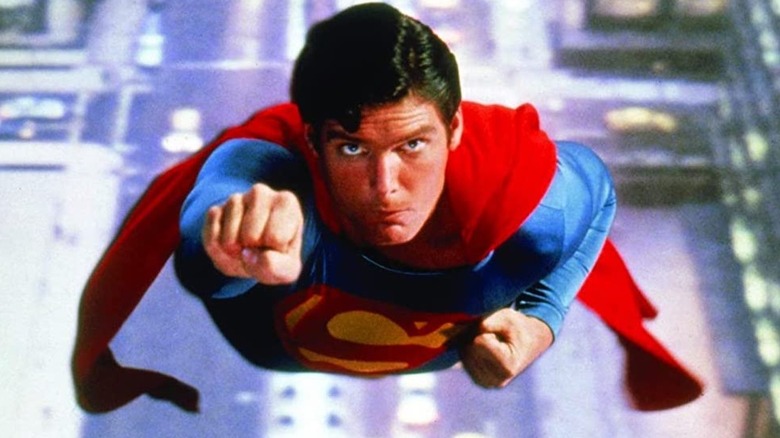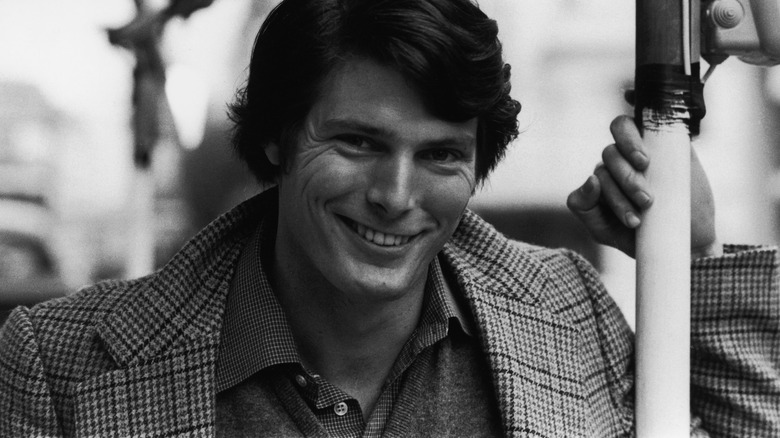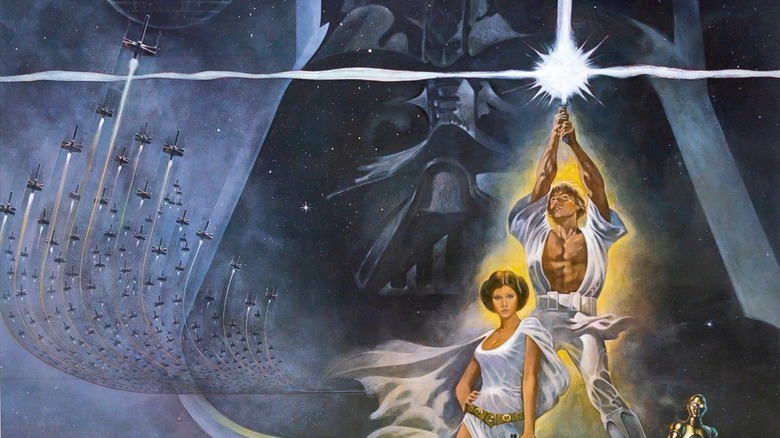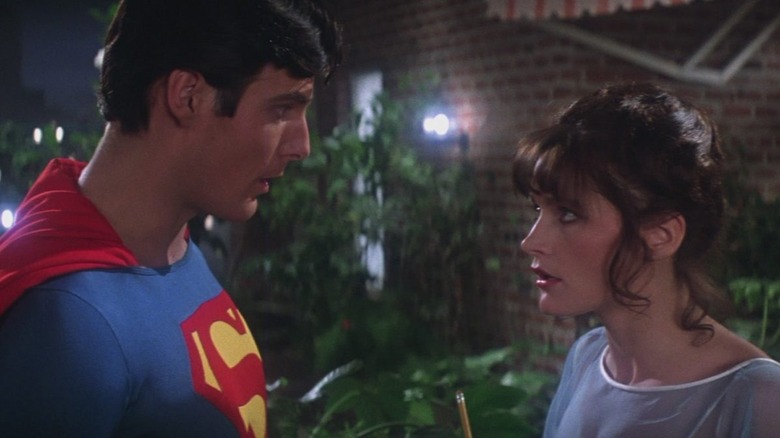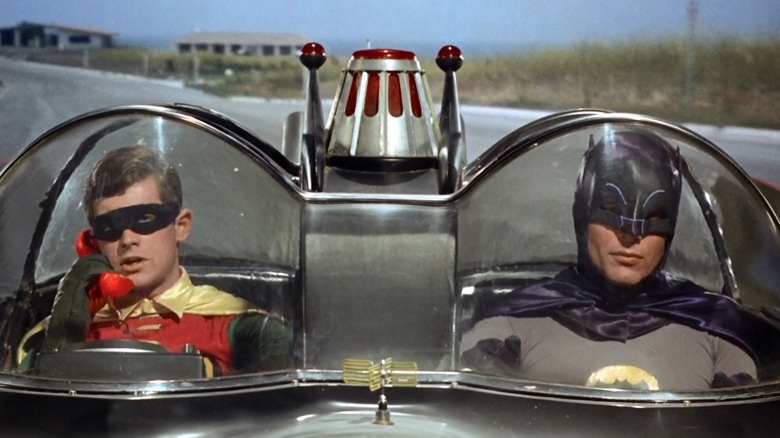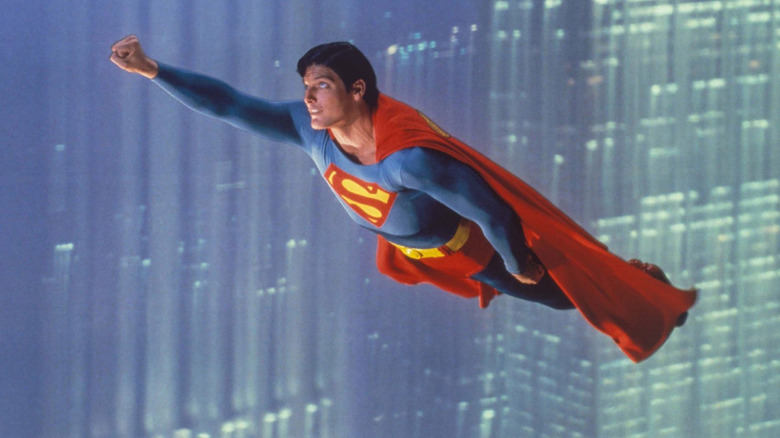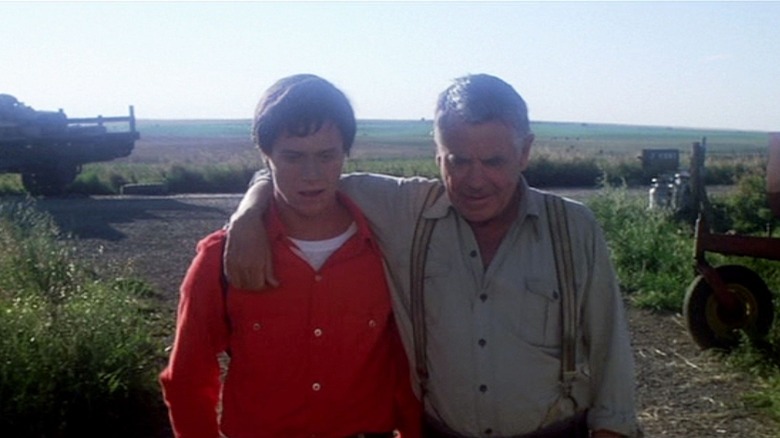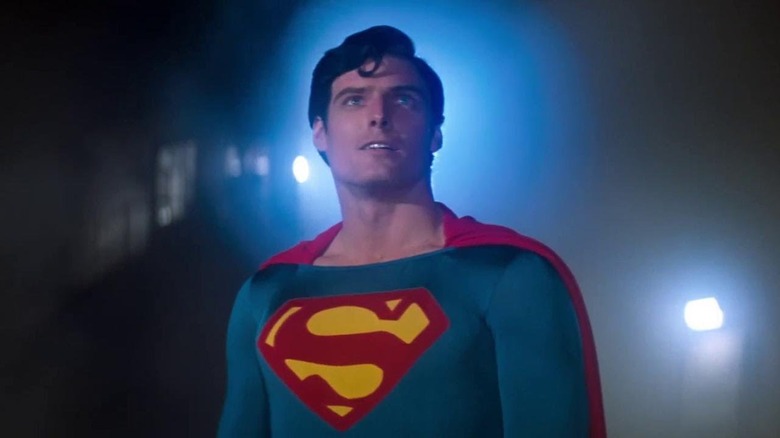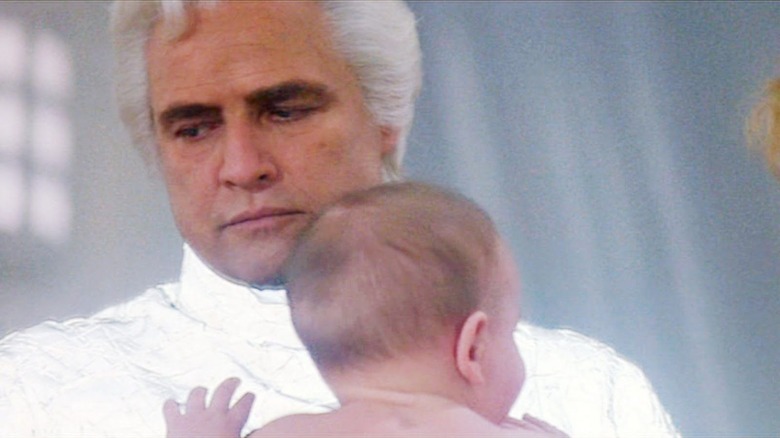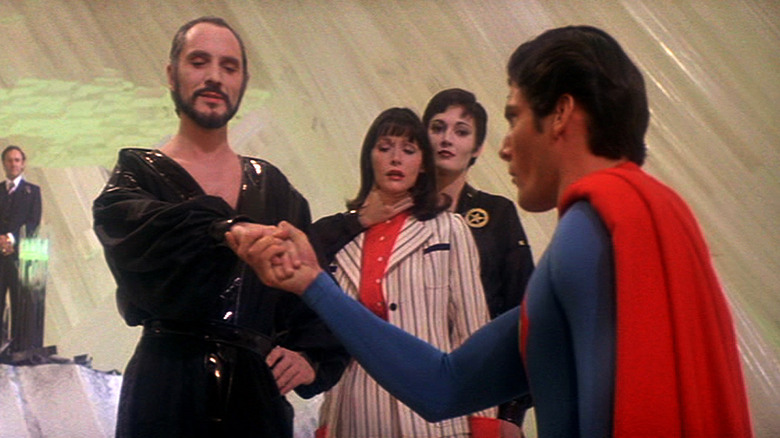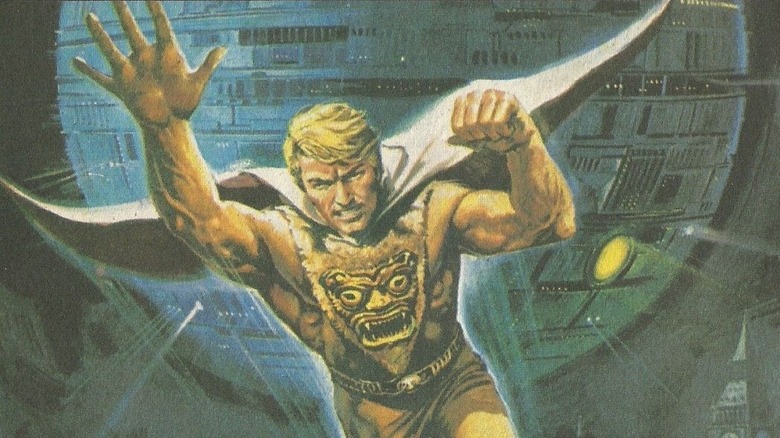What It Was Really Like To See Superman In 1978
Now that there's a new superhero movie or TV show seemingly every week, it can be hard to imagine just what it was like to be there at the birth of the genre. But before Christopher Reeve put on the cape in 1978's "Superman," the idea of a big-screen superhero was nearly unprecedented. Superman himself had been around in comics, cartoons, and radio since 1938, but it took 40 years to prove he could succeed as a movie star. He'd been in a few low-budget quickies, but nothing that could compare to this: a $55 million epic that raked in $300 million worldwide — and that's in 1978 dollars. Once "Superman" proved the formula could work, the rest of the comics world followed, and the movie landscape we all know began to take shape.
But what was it like to watch movie history changing as it happened? Not all of us had the privilege to be there, but we here at Looper took a look at the reports from people who were, and here's what we found out.
Fans watched a worldwide talent search to find the next Superman
Even if Superman had never appeared in a big-budget movie before, he was still an icon from his appearances in nearly every other medium imaginable. Over the past 40 years, viewers had built up a very definite image of who the Man of Steel was, and that meant the movie had a lot to live up to. The producers turned that handicap into an asset the same way MGM had with "Gone with the Wind" decades earlier — by promoting "Superman" with a hyped-up global talent search. Warner Brothers was so determined to get Superman right that they spent almost as long on the casting search as the rest of the production all put together — two whole years.
The process was so public that Roger Ebert made sure to mention it in his contemporary review, and though Hollywood had done this often enough to make him skeptical, he wrote, "Although 'talent searches' are usually 100% horse feathers, this time, for once, they actually found the right guy." Reeve had never appeared in a movie before, but according to producer Ilya Salkind (via Superman Homepage), he won out over hundreds of other unknowns, superstars like Paul Newman, Steve McQueen, and Arnold Schwarzenegger, and even soft rock singer Neil Diamond.
Star Wars had already whetted audience's appetite for science fiction
"Superman" hit the screen at just the right time. It began pre-production at a bearish time for sci-fi blockbusters. Hollywood was still recovering from its near-collapse in the '60s, and the few hits it managed to pull out were mostly dark dramas like "The Exorcist" and "The Godfather." As for science fiction, audiences mostly had to choose between two flavors. B-movie makers were filling drive-ins with cheap, silly adventures full of laughable effects. Meanwhile, their upmarket competitors were making more polished product but using it for grim, philosophical movies like "Soylent Green" and "2001: A Space Odyssey," and there wasn't much in between.
But the year before "Superman" made it to theaters, another movie changed the whole game. "Star Wars" shattered records by combining an old-fashioned space opera based on classics like "Flash Gordon" with newfangled effects technology. It proved moviegoers were ready to have fun again to the tune of hundreds of millions of dollars, and that's not even counting its absolutely massive merchandising business. Audiences wanted more, and while other studios scrambled to cash in, "Superman" offered the perfect movie to tide them over while they waited for Luke and Han to return in "The Empire Strikes Back." So Warner Bros. poached the "Star Wars" crew for talent to bring their own vision of space-based heroes to life, including composer John Williams and production designer John Barry.
The ad campaign was impossible to miss
Warner Bros. knew what they had with "Superman," and they didn't want to miss out on any potential viewers, so they made sure everybody and their mother knew the Man of Steel was coming to a theater near them. MacLean's reported on the movie's marketing just before it came out in their appropriately named "Superhype" cover story. According to the magazine, "Warner Brothers estimates that North Americans will have had seven billion chances, through print, radio, and TV advertising, to have heard about" the superhero flick, and MacLean's placed the advertising budget somewhere between $6 million to $7 million — over $26 million in today's money.
The story runs down a few of the tie-ins that were available at the time, from books and T-shirts to toys and some odder items like trash cans. It's hard to imagine a scenario where all that investment wouldn't pay off, but it was a very real possibility. In the MacLean's piece, writer Ivor Davis reflects on past movies with equally massive ad campaigns and equally safe-bet source material like a remake of "King Kong" and a "Great Gatsby" adaptation starring Robert Redford — films that failed to reach the sky-high profit margins the hype men dreamed of.
No one had ever seen a superhero like this
Superheroes had moved off the printed page and onto the screen before 1978, but after so many decades of flesh-and-blood heroes, it can be hard to imagine the impact "Superman" had when it hit theaters.
Live-action superheroes have been around almost as long as their comics counterparts, starting with '40s serials based on "Captain Marvel," "Batman," and "Superman" himself. But Hollywood didn't have enough faith in the source material to give these movies the kind of resources they would in 1978, let alone now. Instead, viewers got baggy costumes, cardboard sets, and laughable plots that barely resembled the comics.
Until "Superman," the biggest splash superheroes had made in the media was in 1966 with the "Batman" TV show starring Adam West. But that couldn't be more different from what director Richard Donner did with "Superman." It wasn't an adaptation so much as an officially approved parody, goofing on the whole idea of superheroes by exaggerating their wackiest aspects. And by the '70s, TV superheroing had moved on to shows like "Wonder Woman" and "The Incredible Hulk," which were less explicitly comedic but still full of soapy silliness.
Audiences probably expected more of the same from "Superman," but that's not what they got at all. The film treats Superman as serious business and gives his adventures so much grandeur that it encourages us to do the same. Anyone who ever got seriously invested in straight-faced superhero flicks like "The Dark Knight" or "Avengers: Infinity War" owes Donner a huge debt.
The marketing made sure to emphasize the effects
"Close Encounters of the Third Kind" and "Star Wars" made it possible to bring moviegoers a whole new kind of Superman. Earlier versions had left a lot to be desired in that department. The movie serials of the '40s had suddenly transitioned to animation for the flying scenes, and in the '50s TV show, actor George Reeves hung from a wire while a fan blew in his face and fuzzy stock footage was inserted behind him.
It took until 1977 for the movies to finally catch up with fans' imaginations, and the filmmakers pulled out all the stops to make it work. According to the documentary "'Superman: The Magic Behind the Cape," the flying scenes required a combination of matte effects, camera trickery, complicated rigs, and actually hanging poor Christopher Reeve up in the air — sometimes as high as 50 feet. The marketing team summed up the film crew's accomplishment in a simple phrase that everyone in America knew by heart by the time the movie premiered: "You'll believe a man can fly."
There were plenty of other impressive effects too, using the innovations of "Star Wars" to create a miniature planet Krypton and a crystalline Fortress of Solitude that look just as real as Tatooine or the Death Star. But that tagline sums up everything that makes "Superman" work. Suddenly, the sight of a live actor as a comic book hero, tights and all, was a cause for awe instead of laughter.
Superman was a throwback to simpler times
When "Superman" came out, audiences were ready for some old-fashioned fun. "Star Wars" had revived the long-dead space opera genre and self-consciously nodded at the movies of the past with techniques like wipe transitions and the opening crawl it borrowed from the serials of George Lucas' childhood. He'd lean even more on those retro influences in his story for Steven Spielberg's '30s-set adventure "Raiders of the Lost Ark" a few years later.
"Superman" was part of that same zeitgeist. The special effects were downright futuristic in 1978, and Donner used them to make a deeply old-fashioned story fresh again. That's certainly how Roger Ebert felt at the time, writing, "Superman is a pure delight, a wondrous combination of all the old-fashioned things we never really get tired of: adventure and romance, heroes and villains, earthshaking special effects, and — you know what else? Wit."
Donner self-consciously leaned into that aspect of "Superman," calling on classic stars like veteran Western hero Glenn Ford as Pa Kent and former Little Rascal Jackie Cooper as Perry White. And the scenes of Superman's youth in Smallville, Kansas, are self-consciously timeless, with classic cars and settings that could've come out of paintings by Norman Rockwell or Andrew Wyeth. As Clark Kent, Superman still wears the same blue suit and fedora he had since the '40s, and while his coworkers may be more fashionable, but the atmosphere at the Daily Planet still evokes classic newspaper movies like "His Girl Friday."
No one knew if it would fail or succeed
With the benefit of hindsight, it's hard to imagine "Superman" was anything but a super safe bet. But that wasn't how audiences felt in 1978. It represented an enormous investment with its high-tech effects and an all-star cast that included Marlon Brando and Gene Hackman, not to mention the millions upon millions of dollars Warner Bros. poured into the ad campaign. All this for a movie in a genre that didn't really exist yet and had only really proven its viability in other media. If the MacLean's cover story is any indication, the fate of "Superman" was up in the air until the final box office tallies came rolling in.
Discussing how Warner Bros. would share the profits, the article mentions that fact is only relevant "if the movie takes off" and calls that "the biggest if in movie history." It goes on to say the consequences of a super flop could be dire, since Warner Communications was caught in the stock market crash of 1973. In the piece, MacLean's quotes an executive who reassures them that the company is turning a steady profit in many sectors, but they still conclude, "The money from a successful movie and from all the merchandising could make all the difference." Apparently, it did — Warner Communications, now AT&T WarnerMedia, is bigger than ever, and Superman is still a major part of their plans.
Viewers must've expected more Brando than they got
"Superman" had plenty of star power even beyond the name recognition of its fictional hero, and no star in the cast was bigger than Marlon Brando, who defined '50s youth culture and the new school of method acting in early hits like "On the Waterfront" and "A Streetcar Named Desire." And he was bigger than ever in 1978 after his Oscar-winning performance in the blockbuster gangster epic "The Godfather." That meant the ads for "Superman" made sure to put his involvement, as Superman's father Jor-El, front and center.
Viewers could be forgiven for thinking he was the star. So they must've gotten a rude awakening when, after a brief Brando-centric prologue, he disappears for most of the movie, only making a few more appearances as a recording to mentor his son. Altogether, he only gets about 20 minutes of screen time, and Variety reports he knocked out the whole job in less than two weeks. At the height of his fame, Brando was able to command a hefty payday for a few days' work — over $3 million and 11.75% of all the movie's (considerable) future profits. No wonder Warner Bros. wanted to make the most of their investment by hyping up the star's involvement, but it seems to have paid off.
Superman changed the way sequels were made
The producers behind "Superman" had faith it would pay off, and they made an unprecedented gamble on its success. Before they even knew for sure that one "Superman" movie could sell, they committed themselves to two, filming both the film and its sequel simultaneously. That may not seem unusual now that every major movie either is or has a sequel, but in 1978, it was unheard of. "Star Wars" was still just a single movie in 1978, and only a few films had been successfully franchised. And most of those few, like the "James Bond" and "Godzilla" series, were pretty clearly making things up as they went. The closest precedent was "The Godfather Part II," and there's a huge difference between a character-driven historical epic and an action franchise.
But "Superman" did learn from "The Godfather," no doubt because the two series shared a screenwriter in Mario Puzo. Like Puzo's other movies, and unlike previous franchises, "Superman" treated both movies as one big story. A long sequence at the beginning deals with Terence Stamp as the Kryptonian criminal General Zod, who wouldn't become important until "Superman II." If the sequel had never been made, it's easy to imagine audiences scratching their heads over what he was even doing there. Granted, some behind-the-scenes drama eventually forced director Richard Donner to focus on just the first film (and he was ousted when it came time to finish part two), but even if "Superman" didn't invent the sequel teaser, it came close. And audiences apparently ate it up — "Superman II" was the number one movie in the world when it came out in 1981.
Superman inspired a cottage industry of knockoffs
"Superman" soared to the top spot at the box office, and other producers jumped at the chance to ride on its cape-tails. Hollywood wasn't quite ready to kick off the flood of comic book movies that followed "Batman" in 1989, let alone the full-on industry takeover that came with the back-to-back blockbuster successes of "X-Men" and "Spider-Man" at the turn of the millennium. But there were still plenty of smaller studios waiting to cash in, even if they couldn't get the rights to any of the most popular comic book heroes. Most famously, Italian outfit ADM threw together "The Pumaman" in 1980, which became a cult classic after it got picked up for the movie-mocking series "Mystery Science Theater 3000." If "Superman" made us believe a man could fly, the best "Pumaman" could do is — as the "Science Theater" crew sang — "fly like a moron."
Across the Mediterranean, "Supersonic Man" came out of Spain and didn't even try to hide its inspiration, giving the lead an identical backstory as a hero sent from space to protect the Earth and a suspiciously similar red-and-blue skintight outfit, just with more glitter. Meanwhile, a Turkish film studio "Superman II" to market with their own unauthorized sequel, "The Return of Superman." In Australia, "The Return of Captain Invincible" failed to make "Superman" money despite the presence of singing, dancing Alan Arkin and Christopher Lee. Bollywood released its own "Superman" in 1987, where the Man of Steel dances to Michael Jackson's "Beat It." And even Disney got in on the act with "Condorman," where a comic artist becomes a real-life superhero, even if the plot owes at least as much to James Bond as "Superman."
